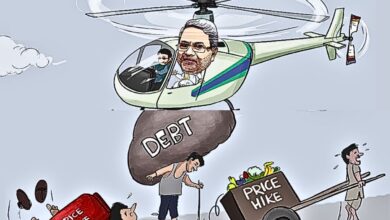Economy indicators and their changes after unlock- where exactly are we standing

Economy indicators and the expected changes
Do you remember the last time you heard any good news about the economy from the last year? Yes, neither did we. Ever since the COVID-19 hit the country, the economy has not been stable. We witnessed a variety of events from a 7.6% contraction in GDP last year, failure of containing the virus, the on-going world’s largest protest, failure to contain the virus to complete failure of the health sector of the country. The country recently witnessed the second wave of the virus, affecting thousands and thousands of people and destroying the families of many.
The economy has been affected a lot in the last year and is still not recovered from it. However, the next month after the second wave was spreading widely, there has been some good news. A number of real economy indicators were reported good in the month of June, while some of them are still not so good. Not all the indicators were well, which led to the rise in demand for rural work, reflecting that the economy is still in recovery phases as yet.

The data of the Nomura India Business Resumption Index, which measures the weekly performance of the economy, clearly indicated that the business resumption is rebounding quicker from the second wave of the virus than from the first wave. During all four weeks of June, the level measured by the index was very high, and therefore very beneficial for the economy. It measured 91.3 in the last week from 86.3 in the previous week. According to reports, it is now only 8.7 percentage points below the pre-pandemic era and just 3.6 below the pre-second wave level.
Another good indicator of economic growth is the growth indicated by the State Bank of India. Even after witnessing low business demand in the previous year, especially by the industrial sector. SBI’s business activity index also rose to 91.8 percentage points in the last week of June, from 78.3 in the previous week. There was a visible growth in the weekly vegetable’s arrival and revenue collections by regional transport organizations. However, speaking about the labor participation rate, there is a slight dip in it as reported by the SBI reports.
Talking about the electricity demand, which witnessed an 11.2% contraction in May 2021, it also witnessed a growth of 8.3% in the month of June. What is the reason behind the growth of electricity demand? In many reports, it has been claimed that the growth is due to the rising summer heat.
However, in India, the separate data for industrial and residential areas is not available and therefore the actual reason behind this growth becomes nearly impossible to know. How is this rising level a piece of good news for the economy If you were wondering? Even if the rising demand for electricity does not have any direct relationship with the economy, the rise in it can be an indication that the economic activities are opening up in the economy.
Talking about an index that witnessed a contraction in the month of June, Purchasing Managers Index (PMI) which suggested that both the services and manufacturing activities also contradict the growth of electricity demand. The PMI fell down to 43.1 in June from 48.1 in May. This level of reduction is the sharpest till now from July 2020 and acts as a major threat to the economy of the country. Both the manufacturing sector’s and service sector’s PMI is below 50 percentage points in June, being 48.1 and 41.2 respectively.

Another indicator indicating the growth in economic activity is E-Way bills. They provide data about the movement of goods across the country. It shows that there was a rise in the movement of goods across the country. It is also supported by the data of factory gates from the automobile sector. The level of E-Way bills rose to 4.75 crores in June 2021 which was only 4 crores in the previous month. The growth in the level is very good for the economy, however, it is still far away from the peak level which it reached in March.
Talking about the movement of goods, the data of truck rental cannot be ignored as it plays a major role in the movement of goods. Even after witnessing a fall of 6-8% in the last month, the level rose nearly by 13-15% in the year of June indicating the rise in overall trade and therefore development of the economy.
You obviously remember that the country’s merchandise export rose to a record high in the first quarter of Financial Year 2021-2022. The country witnessed a growth in the month of June to $32.46 billion from the previous $32.27 billion in May. Still, the rising exports level is not beneficial for the economy due to the current rising level of exports.
There is a growth in non-oil imports in the month of June as soon as the economy started to open up after the imposed lockdown. The imports rose from $38.55 billion in the month of May to $41.86 billion, which is very concerning for the economy as the level of imports is greater than the level of exports. Currently, the domestic demand is much behind the global activity levels which are leading to the gap between the current import and export levels.
The indicator which is the most crucial in showing the condition of the economy is the labor force. The labor market recorded very low levels of improvement and remained the weakest part of the economy. Demand for work under the government’s MGNREGA scheme rose to the highest since the last year’s June.
Nearly 3.5 crores of the households demanded work under the MGNREGA scheme in June 2021 whereas the demand was only 2.8 crore in the previous month. However, due to a fall in the economic activities, the demand of only 1.9 crore people was fulfilled in June as compared to 1.7 crore households only in the month of May… Moreover, the demand-supply gap for the scheme has been the widest since April last year.

The level of unemployment is also on the rise stating the poor condition of the economy. However, in the month of June, the unemployment rate eased down to 9.1% from 11.9% in May 2021. However, regional differences still exist in the country with urban areas recording higher levels of unemployment. The main issue, even after the reduction of unemployment is the labor participation rate, which has been severely affected by the COVID-19 virus. The labor participation rate has most likely not witnessed any growth since April 2021 and is lower than the rate in the pre-Covid era.
However, everything takes time to recover, and with good growth in a lot of economic indicators, the future of the economy is safe. However, the virus is still there, and therefore the protection of the environment is in our own hands.
Edited by Aishwarya Ingle




